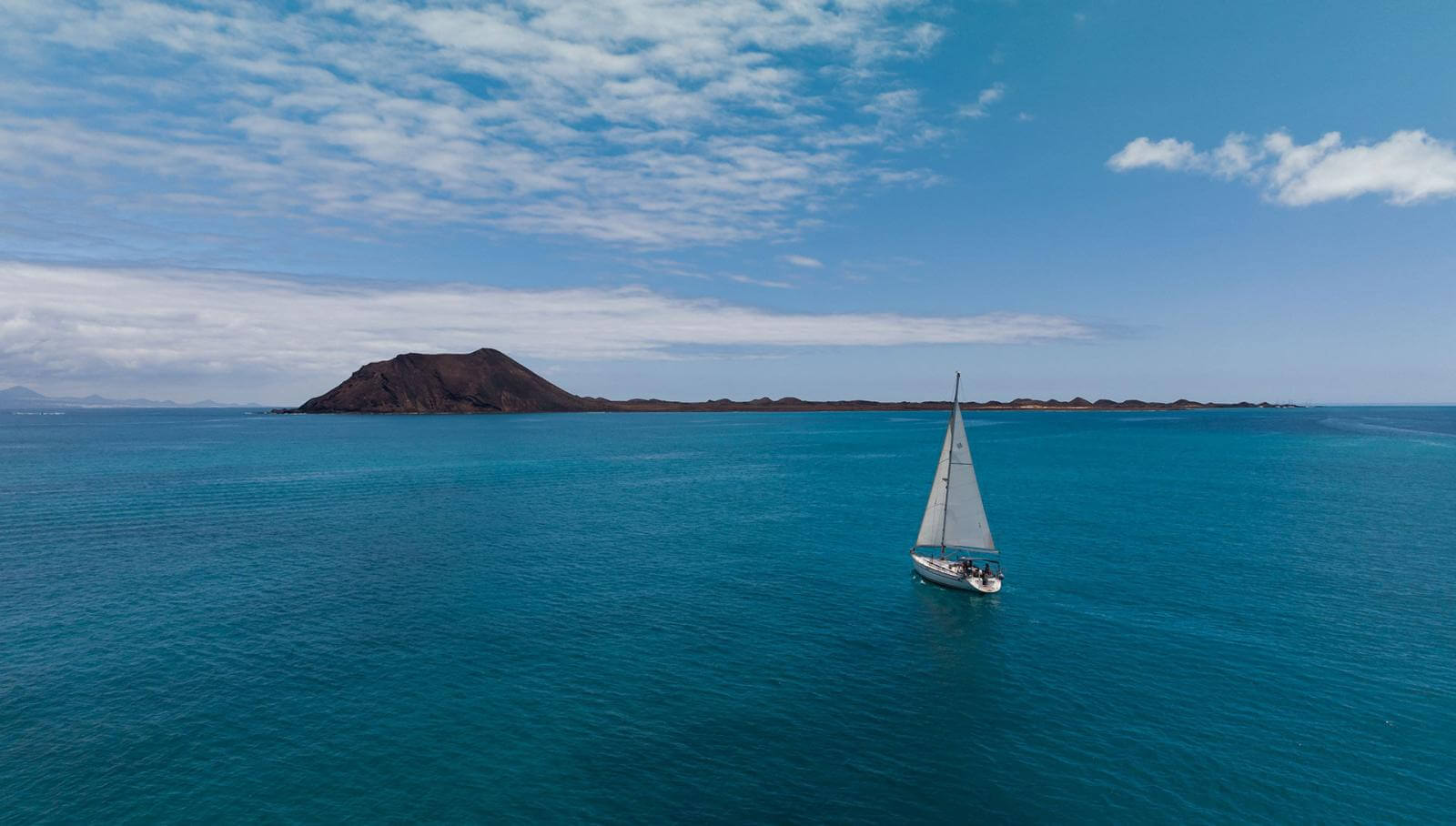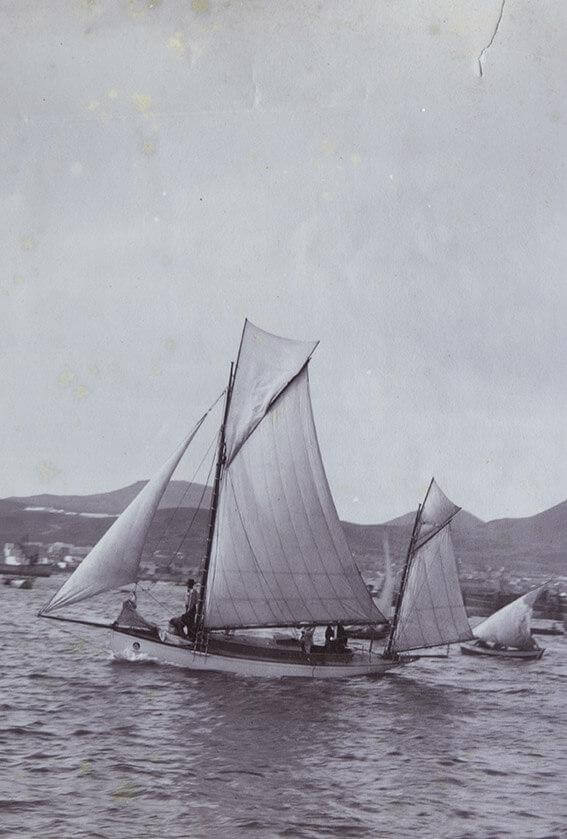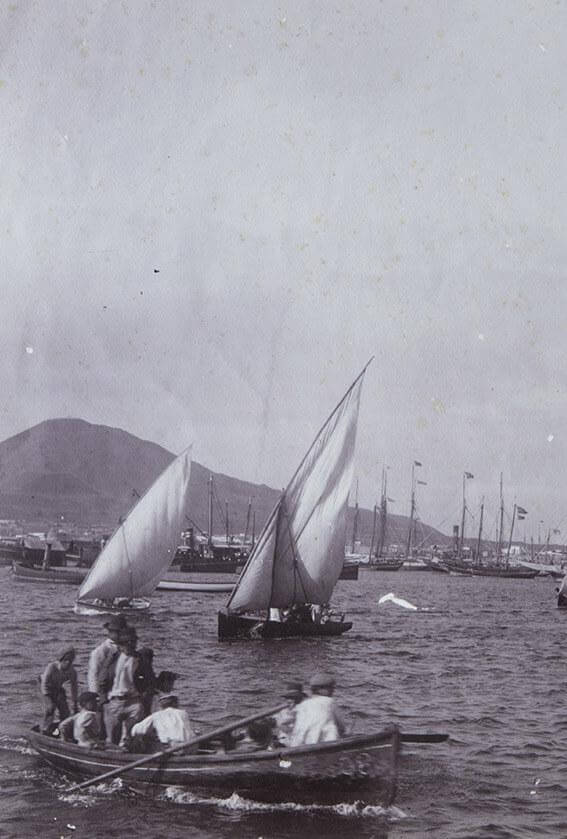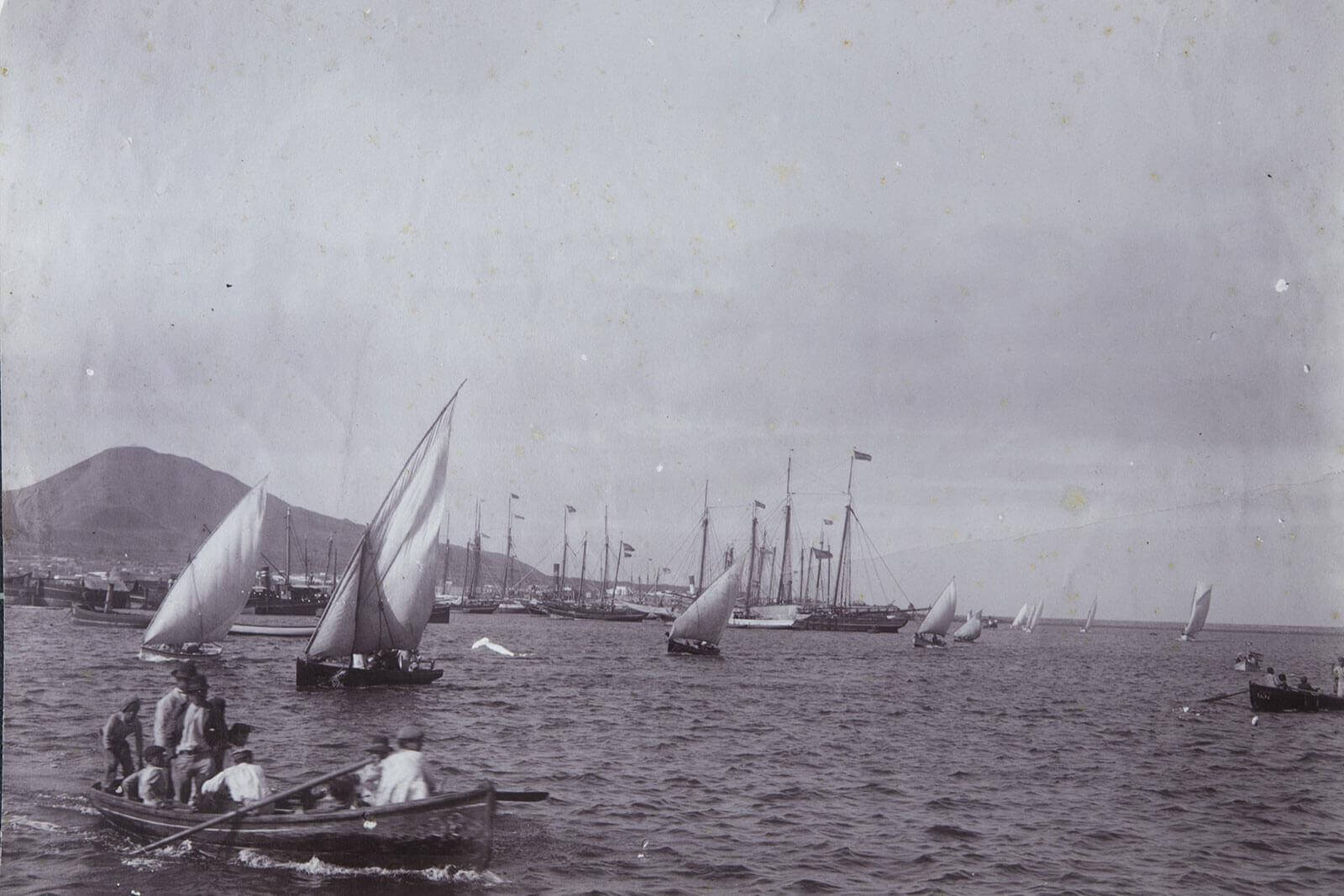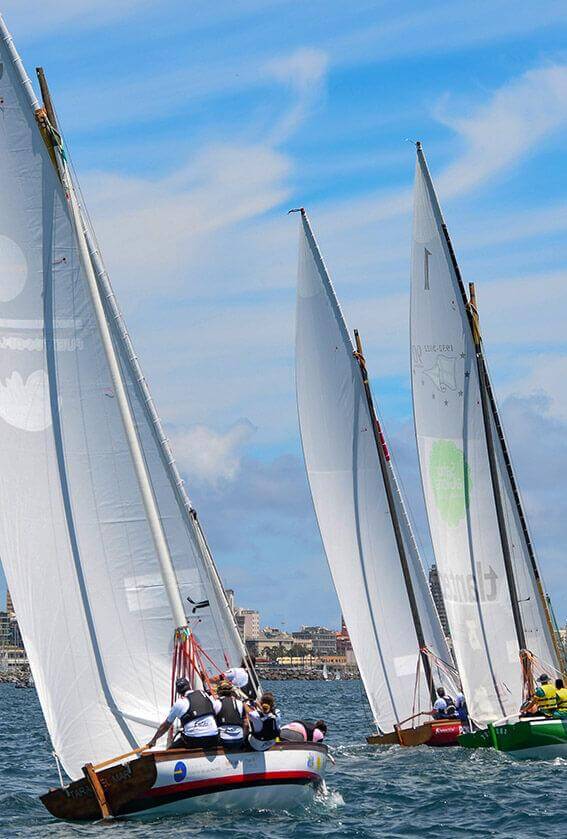Since the discovery of America and until our times, the Canary Islands have been the natural maritime gateway between Europe, Africa and America. This continuous coming and going of sailors has led to an excellent relationship with the sea and sailing among the archipelago's inhabitants. And this is why its long nautical tradition is acknowledged the world over.
From 1492 to the present day
The discovery of America and the trade winds, which were crucial for sailing in the 15th century, made the Canary Islands the epicentre of the Atlantic. The archipelago became a mandatory stop for the boats that followed the new route to America. Multiple seafaring nations left their mark along the coasts of the Canary Islands. This is evidenced by the influence of the lateen sail on the region’s traditional vessels, known as “botes” or “barquillos”.
As well as their privileged geographical location, their very nature as islands and the excellent climate were key for the development of sailing in the Canary Islands. Sailing is practised as a sport, but also as a form of leisure and entertainment, thanks to the excellent network of marinas and nautical services that exist on nearly all the islands.
The international prestige of the islands’ regatta sailors, the hosting of international races and the fact that the archipelago is the starting point for important trans-ocean regattas demonstrate its long-standing nautical tradition.
From navigation to the sport of sailing
The beginnings of sailing as a sport in the Canary Islands can be traced back to the early 20th century. They were, moreover, determined by the appearance of yacht clubs or regatta clubs on the islands of Gran Canaria, La Palma and Tenerife. But these clubs came into being thanks to the development of the islands’ harbours in the late 19th century, providing shelter and refuge for sailing to flourish safely, avoiding the rigour of the winds and seas of the Atlantic Ocean.
The first one to be established was the present-day Real Club Náutico de Tenerife, on 26 December 1902, under the name of Club Tinerfeño. In 1903, the Real Nuevo Club de La Palma was founded, and in 1908 the Real Club Náutico de Gran Canaria. There can be no doubt that these three entities became major drivers of sailing as a sport. The first official competitions were held in them, they encouraged the creation of inter-island regattas and they strove to train new sailors through their schools.
From tradition to popular sport
anarian lateen sailing is a prominent feature within the nautical tradition of the Canary Islands because of its particularity, which makes it utterly unique. It is particularly well-established in the islands of Gran Canaria, Lanzarote and Tenerife. This sailing modality came into being in the late 19th and early 20th century, at a time when the city of Las Palmas de Gran Canaria was developing due to the construction of its port.
These boats propelled by a triangular sail were initially used to transport food and people between the ships anchored in the port of Las Palmas and the town. Over time, races between the vessels became popular, to determine who could reach the ships first. The first “bote” race documented as a regulated regatta was held in 1904 during the fiestas of the fishing district of San Cristóbal. Two years earlier, in 1902, some competitions between these boats had been held during the fiestas of La Naval.
Lateen sailing regattas became established with the appearance of the Real Club Náutico de Gran Canaria. This new entity helped to develop the first rulebook, supported the races when they were held and promoted the sport until it was consolidated.
Although it has gone through some difficult periods, lateen sailing has managed to survive until our times. Nowadays, under the umbrella of the Federation of Canary Lateen Sailing, official competitions are held every year with the participation of numerous boats. The “botes” have become a hallmark of the nautical tradition of Las Palmas de Gran Canaria.
From entertainment to international recognition
Over the years the Canary Islands became a global benchmark in the world of top-level competitive sailing. Seven gold medals, 28 Olympic sailors and numerous world and European championships give credence to this. The superb wind and wave conditions, the good climate and some excellent installations have turned the archipelago into a cradle of prestigious, internationally-renowned sailors.
The Real Club Náutico de Gran Canaria is the sporting entity on the light sailing panorama with the highest number of titles in the world. Its regatta sailors have won seven Olympic gold medals, 60 World Championship titles, 2 ISAF gold medals, 36 European championships and 349 Spanish championships.
And every year the Canary Islands are the training venue for Olympic teams from different countries. In the archipelago they seek not only the good wind and sea conditions, but also the bounties of the climate which enable them to extend their training days over longer hours. In addition to all this, international trials are held here continuously. Every year the clubs and entities linked to sailing work to organise international regattas.
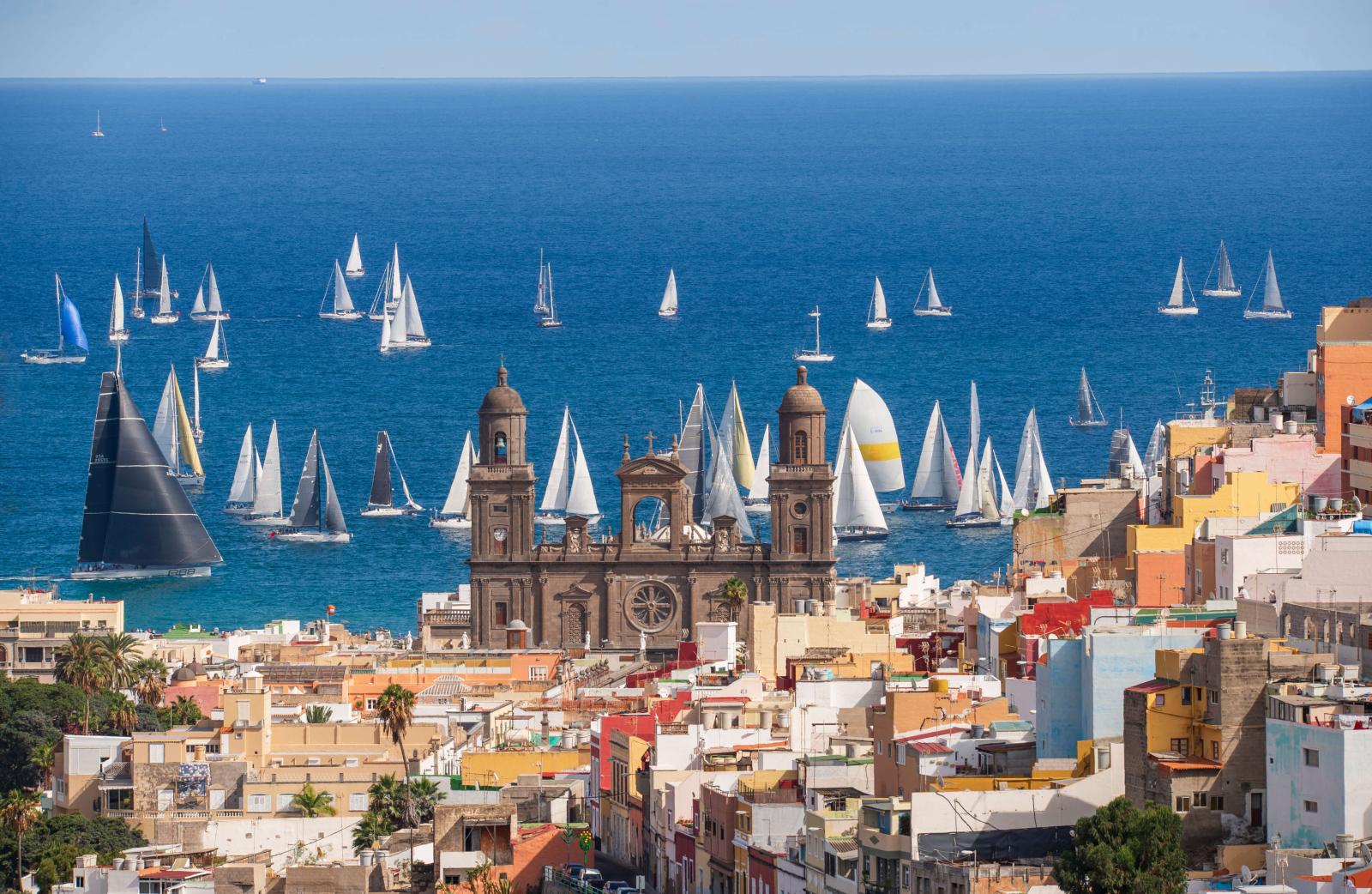
From a stopover to transatlantic regattas
The departure point function that made the Canary Islands the gateway to the Atlantic after the discovery of America remained in place for centuries. Throughout all these years, the archipelago continued to receive visits from sailors who put in at their harbours to take supplies onto their vessels before embarking on an Atlantic crossing.
When sailing began to be seen as a leisure activity and sport, many non-commercial vessels also found the haven they sought in the islands’ harbours. These locations gradually grew and adapted to the needs of the new sailors.
And so the very first trans-ocean regattas departing from the Canary Islands came into being. The most important one, in terms of how long it has been held and number of participants, is the Atlantic Rally for Cruisers, popularly known as the ARC. Seen as the biggest trans-ocean sailing event in the world, it starts in the Marina of Las Palmas de Gran Canaria every November.



